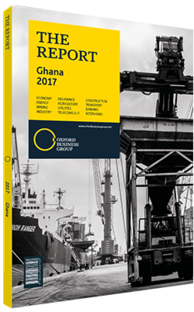Ghana agricultural sector rolls out financial tools to meet growth potential
Access to capital is critical for agri-business and enables small-scale enterprises to invest in expanding production. Most of Ghana’s agricultural sector is composed of small or subsistence farms in rural areas, making it difficult to secure collateral or even travel to visit a credit provider. It can also be challenging for farmers to understand the crediting process. Additionally, financial institutions have not historically been interested in providing agricultural loans. “Banks are not willing to lend to agriculture because of the information they have. The banks see the sector as risky and return on investment is often not high enough. It’s also a slow industry so it takes time to see a return,” Edem Azagloe, president of the African Youth Network for Agricultural Transformation, told OBG. Perceived risks associated with agriculture include issues of land ownership, weather changes, crop disease and non-repayment. For those who do receive a loan, they often struggle to repay them. Many loans have short repayment periods of one year, and many charge very high interest rates.
Ghana’s financial sector is one of the most developed in West Africa. In 2014 Ghana had 27 local banks, 137 rural banks, over 80 regulated and unregulated microfinance institutions, and 58 other financial institutions. The government-owned Bank of Ghana requires that 50% of loans disbursed by rural banks fund agriculture, although this mandate is not well enforced. Approximately 87% of lending in Ghana comes from commercial banks and only 5% of these loans went to agri-business, with some banks requiring 100% collateral. “The government should find a way to meet the farmers halfway on loans. They should consider providing loan assurances or assistance in paying off some interest,” Benjamin Adjei, head of programmes at the Food and Agriculture Organisation of the UN (FAO), told OBG.
Government Approach
The government has pledged 10% of its budget to supporting agriculture and established a number of institutions and programmes to assist with financing. A Credit Reference Bureau was created to aggregate the credit histories of prospective borrowers and in 2004 the government established the Venture Capital Trust Fund to provide finance to small and medium-sized enterprises (SMEs) in key sectors including agriculture.
In 2006 it set up the Micro and Small Loans Centres to help SMEs expand by offering 12-month unsecured loans at low interest rates, and in 2011 it launched the Export Development and Agricultural Investment Fund (EDAIF), which provides funds to commercial banks to offer lower interest rates for SMEs. The EDAIF has approved GHS152.6m ($39.4m) for 75 projects in recent years.
Creating Options
The FAO’s Adjei highlighted the processor-driven approach of Ghanaian company B-BOVID as an example of an innovative approach to addressing the financial barriers farmers face. B-BOVID provides over 1200 smallholder farmers with free advisory and training services, high-yield seedlings, fertiliser, and mechanisation services at subsidised rates. At harvest, B-BOVID purchases raw produce from these farmers for processing into finished products. They also operate a shared fund, which distributes some of the company’s profit back into the farming communities and offers financial assistance. International donors are also playing a role. The US Agency for International Development (USAID) has launched a five-year programme to improve financing for the maize, rice and soy industries in northern Ghana called the Financing Ghanaian Agriculture Project. It trains and equips financial institutions and business advisory service providers to reduce transaction times, increase loan approvals and expand collaboration between stakeholders. In its first two years, it generated over $40m in private financing. USAID also helped found the Ghana Commercial Agriculture Project to foster public-private partnerships.
You have reached the limit of premium articles you can view for free.
Choose from the options below to purchase print or digital editions of our Reports. You can also purchase a website subscription giving you unlimited access to all of our Reports online for 12 months.
If you have already purchased this Report or have a website subscription, please login to continue.

